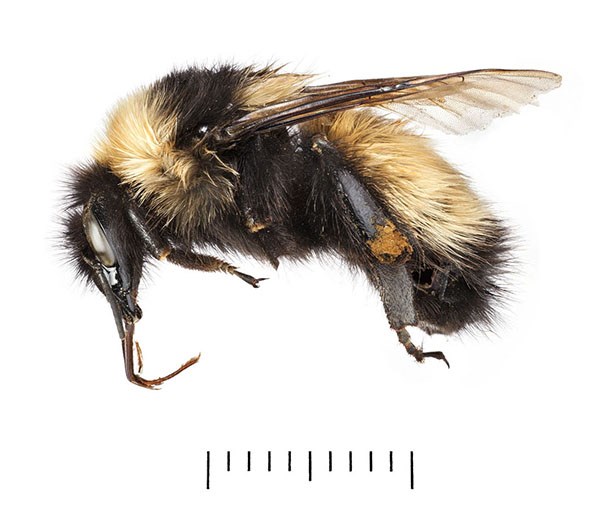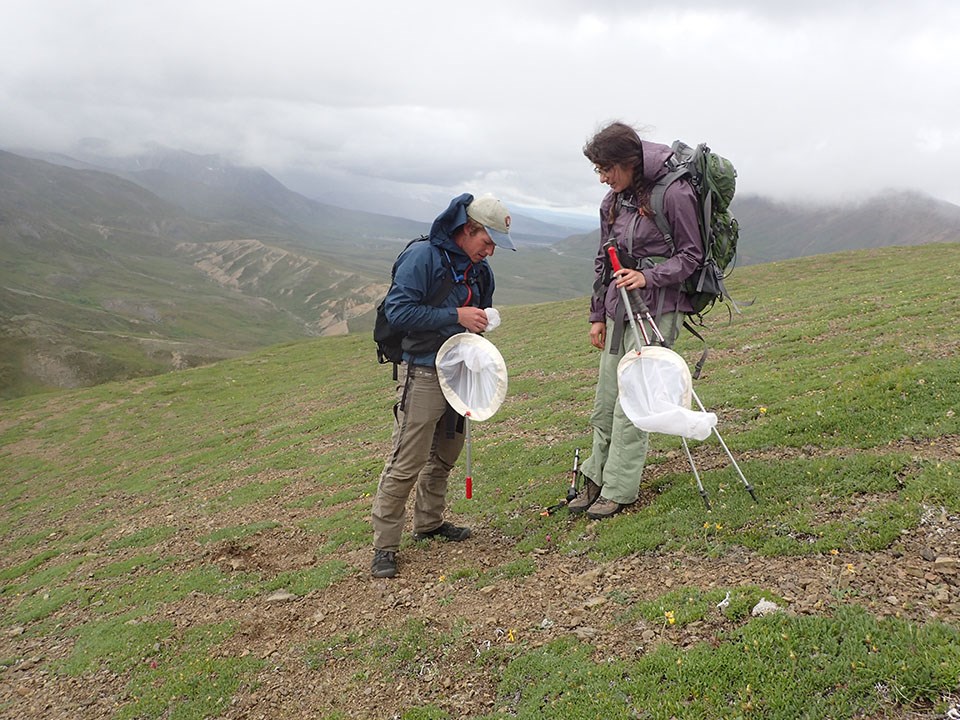Last updated: March 23, 2018
Article
Marking a New Bee-ginning: A New Species of Pollinator found in Denali National Park and Preserve
Denali National Park and Preserve is known for its awe-inspiring wildlife, such as caribou, wolves, and grizzly bears. But what about the smaller but equally important creatures?
Even in Alaska’s subarctic conditions, insect pollinators, like bumblebees, are crucial to the survival of plants and the animals they support. Lucky for them, the National Park Service (NPS) and National Parks Magazine reports a new-bee is on the scene.
A Cheeky Discovery

Photo courtesy of Natural History Museum, London.
It all started with the culmination of a study by NPS entomologist, Jessica Rykken, in Denali. In the summer of 2012, Rykken conducted an inventory of Denali pollinators, identifying 20 different bee species. Thirteen of these bee species were bumblebees, including a few Bombus neoboreus (bom-bus neo-bor-e-us).
“Bombus neoboreus belongs to a subgenus of bumble bees, Alpinobombus, all of which are far northern (or very high elevation) species,” said Rykken. “Even in a place like Denali, the Alpinobombus species are most often encountered high up in the alpine tundra--so you're usually in a very spectacular place when you catch one!”
Unbeknownst to Rykken, a few of the bumblebees she collected spurred a series of events that lead to experts in Canada making an amazing discovery - a new species! Her work held a key piece to a puzzle: Three of those bees that Rykken had collected in Denali had an important feature.
“When I collected the neoboreus specimens, I didn't know I had anything different,” she said. “However, when examining them under a microscope, I did make some notes about cheek length (a diagnostic character for bumble bees!) and color that didn't quite match the neoboreus description in the literature, but there can be a lot of variation in color among bumble bees, so I didn't suspect this could be a new species. In the end, this was determined by others in Canada through DNA analysis.”
According to Rykken, bumblebees are among the best known and studied bees, because of their large size and bright coloring. However, so far, not much else is known about the new species. The new bee was named Bombus kluanensis, as a nod to the Kluane region of Canada, the only other place it is currently found.

Photo by Jessica Rykken.
A New Hope?
The new discovery fosters hope for the future of pollinators. Since the decline in commercially raised honey bees, scientists have hopes that native bees could assist in the pollination of both farmed crops and wild plants. Likewise, Denali’s grizzlies rely on the pollination of blueberries, one of their main foods.
“In the bee world, bumble bees are the movers and shakers of pollen in the subarctic...Bumble bees are very important pollinators of wildflowers and many shrubs in the subarctic, and thus are fundamental to the maintenance of healthy, functioning ecosystems,” said Rykken.
For now, Rykken and her colleagues are celebrating this amazing discovery, but there is work to be done to see how this new bumble species supports pollination in its native region.
“I'm hoping this summer to visit Wrangell-St. Elias National Park which lies between the only two locations that Bombus kluanensis is known from: Denali and the Kluane region across the border in Canada (Yukon Territory). It is logical that we might find the species here, as the park encompasses both mountain ranges (Alaska and St. Elias) where the bee is known to occur ,” she said. “This would be a significant contribution to what we know of the distribution of Bombus kluanensis.”
Learn more about Jessica Rykken’s work by watching our Stay Curious series, here.
